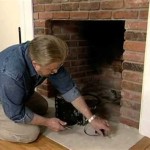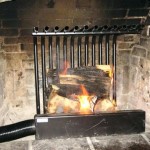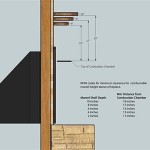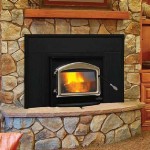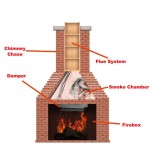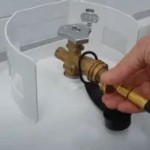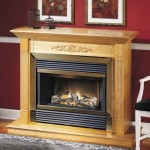Cost of Removing a Gas Fireplace: A Comprehensive Guide
Removing a gas fireplace is a home renovation project that can range in complexity and cost, depending on several factors. Understanding these cost drivers is crucial for homeowners considering this undertaking. This article provides a detailed overview of the potential expenses associated with removing a gas fireplace, encompassing everything from initial assessments to final repairs.
Key Factors Influencing the Removal Cost
The cost of removing a gas fireplace is not a fixed figure and is subject to considerable variation. Several key aspects of the removal process itself and the surrounding environment contribute significantly to the eventual price. Ignoring these factors up front can lead to unforeseen expenses and budgetary overruns.
Complexity of the Installation: A gas fireplace that was installed using simple, accessible piping and venting systems will generally be easier and less expensive to remove than one that involves complex, integrated infrastructure within the home’s structure. Complications arise when the gas line is difficult to access, requires extensive rerouting, or if the venting system is intricately woven through the walls or ceiling joists. Older units can also present challenges due to outdated components and potential code violations. Furthermore, if the fireplace is built into a complicated structure such as a custom-built entertainment center, the removal process will be significantly more involved.
Type of Fireplace: There are various types of gas fireplaces, each with unique design and installation characteristics. These range from freestanding units to built-in models and gas fireplace inserts. A gas fireplace insert, for instance, is typically installed within an existing wood-burning fireplace, requiring additional steps to remove the insert and potentially the firebox of the original fireplace. Built-in models often require demolition of surrounding wall structures, which increases labor time and disposal costs. Freestanding units, being less integrated into the surrounding structure, often represent the least expensive removal option.
Gas Line Disconnection and Capping: This is arguably the most critical aspect of the removal process, and it must be performed by a qualified and licensed gas technician to ensure safety and compliance with local building codes. Improperly disconnecting a gas line can lead to gas leaks, explosions, and carbon monoxide poisoning. The cost will vary depending on the accessibility of the gas line, the complexity of the shut-off valve location, and the local regulations regarding gas line capping. Some municipalities require inspection after the capping is performed, which will add to the overall cost.
Venting System Removal: Gas fireplaces require a venting system to safely exhaust combustion byproducts outside the home. The type of venting system (direct vent, B-vent, or vent-free) influences the removal process and cost. Direct vent systems, which vent directly through an exterior wall, are generally easier to remove than B-vent systems, which require a chimney. Vent-free systems, while not requiring venting, may still require modifications to the wall or floor where the unit was situated. The accessibility and condition of the existing vent will also influence the cost.
Demolition and Debris Removal: Often, removing a gas fireplace involves some degree of demolition, particularly when dealing with built-in units or custom surrounds. This demolition process generates debris that must be properly disposed of. The volume of debris, accessibility of the removal site, and local disposal fees will all affect the cost. Some areas may require special permits for debris removal, especially if asbestos or other hazardous materials are suspected.
Repairs and Restoration: After the gas fireplace and related components are removed, the surrounding area will likely require repairs or restoration. This may involve patching drywall, painting, flooring repairs, or even structural repairs if the fireplace was a load-bearing element. The extent of these repairs directly impacts the overall cost of the project. The chosen materials for repair (e.g., paint, drywall, flooring) will also play a significant role in the final price. Matching existing finishes can sometimes be challenging and require professional expertise.
Breaking Down the Costs: A Detailed Estimate
To provide a clearer understanding of the potential costs involved, it is helpful to break down the different stages of the removal process and estimate the associated expenses. These figures are estimates and can vary based on geographic location, contractor rates, and the specific conditions of the project.
Initial Assessment and Consultation: Before any work begins, it is advisable to have a professional assess the existing fireplace and the surrounding area. This assessment will identify potential challenges, determine the scope of work, and provide a detailed cost estimate. Expect to pay between $50 and $200 for this initial consultation. Some contractors may waive this fee if you choose to hire them for the removal project.
Gas Line Disconnection and Capping: As previously mentioned, this is best left to a licensed gas technician. The cost typically ranges from $150 to $500, depending on the complexity of the gas line and local regulations. In some instances, particularly in older homes, the gas line may need to be upgraded to meet current safety standards, which would increase the cost significantly.
Fireplace Removal: The labor costs for removing the fireplace itself can vary widely. For a simple freestanding unit, this may cost between $100 and $300. For a built-in unit requiring demolition, the cost could range from $500 to $2,000 or more. This price includes disconnecting the venting system, dismantling the fireplace structure, and preparing the area for debris removal.
Venting System Removal: Removing the venting system can add another $100 to $500 to the overall cost, depending on the type and complexity of the installation. Removing a chimney, if applicable, will add significantly more to the project cost, potentially ranging from $500 to $3,000 or more. The structural integrity of the remaining roof and ceiling should be carefully considered after chimney removal.
Debris Removal and Disposal: Debris disposal fees vary depending on the amount of material and local landfill rates. Expect to pay between $100 and $500 for debris removal and disposal. Renting a dumpster may be necessary if a substantial amount of demolition is involved.
Repairs and Restoration: The cost of repairing and restoring the surrounding area can vary significantly depending on the extent of the damage and the desired finish. Simple drywall patching and painting may cost between $200 and $800. More extensive repairs, such as flooring replacement or structural work, could easily exceed $1,000 or even $5,000. Obtaining multiple quotes for the repair work is highly recommended.
Permits and Inspections: Depending on local regulations, permits may be required for gas line disconnection, venting system removal, and structural modifications. Permit fees typically range from $50 to $500. Inspections may also be required to ensure compliance with building codes.
Minimizing Removal Costs and Potential Pitfalls
While removing a gas fireplace can be a costly undertaking, there are certain steps that homeowners can take to minimize costs and avoid potential pitfalls. Careful planning, informed decision-making, and proactive communication with contractors are essential.
Obtain Multiple Quotes: It is crucial to obtain multiple quotes from reputable contractors before committing to a removal project. This allows homeowners to compare prices, services offered, and contractor experience. Thoroughly vet each contractor by checking references, licenses, and insurance coverage. A detailed written estimate should be obtained from each contractor, outlining the scope of work, materials to be used, and payment schedule.
Proper Planning and Preparation: Thorough planning can help minimize unforeseen issues and additional costs. Carefully assess the existing fireplace and surrounding area to identify any potential challenges. Consider the desired outcome after the removal, such as the intended use of the space and the desired aesthetic. Having a clear plan will help contractors provide more accurate estimates and avoid unnecessary work.
Consider DIY Options (with Caution): While some aspects of the removal process, such as debris removal or basic drywall patching, may be suitable for DIY, it is strongly advised to leave tasks involving gas lines, venting systems, and structural modifications to qualified professionals. Incorrectly performed DIY work can lead to safety hazards, code violations, and costly repairs. Prioritize safety and compliance with local regulations above all else.
Communicate Clearly with Contractors: Effective communication with contractors is essential throughout the removal process. Clearly communicate your expectations, concerns, and budget constraints. Ask questions and seek clarification on any aspect of the project that is unclear. Maintain open and honest communication to avoid misunderstandings and ensure a smooth and successful removal process.
Be Prepared for Unexpected Issues: Despite careful planning, unexpected issues can arise during the removal process. Hidden damage, outdated wiring, or unforeseen structural complications can all add to the cost and timeline of the project. Set aside a contingency fund to cover these potential expenses. Be flexible and willing to adjust the plan as needed to address any unforeseen challenges.
Verify Contractor Licensing and Insurance: Before hiring any contractor, verify that they are properly licensed and insured. A valid license ensures that the contractor has met the required qualifications and is authorized to perform the work. Insurance provides protection against liability in case of accidents or property damage. Request proof of insurance and verify the contractor's license status with the appropriate licensing board.
Understand Local Building Codes and Regulations: Familiarize yourself with local building codes and regulations related to gas fireplace removal. This includes permit requirements, gas line safety standards, and disposal regulations. Ensuring compliance with these regulations is crucial to avoid fines and ensure the safety of your home.
Explore Alternative Solutions: Before committing to a full removal, explore alternative solutions that may be less costly and disruptive. Consider converting the gas fireplace to a different fuel source, such as electric, or updating the existing unit to improve its efficiency and aesthetics. These options may be more cost-effective than complete removal.
By carefully considering these factors, homeowners can make informed decisions and effectively manage the cost of removing a gas fireplace, while ensuring safety and compliance with local regulations.

How Much Does Gas Fire Removal Cost In 2024 Checkatrade

2024 Fireplace Chimney Removal Cost Stack T Demolition

How Much Does Fireplace Removal Cost In 2024 Checkatrade

How Much Does Gas Fire Removal Cost In 2024 Checkatrade

How Much Does It Cost To Remove A Fireplace Insert 2024 Data Angi

How Much Does It Cost To Remove A Gas Fireplace In 2024 Angi

Cost Of Removing A Gas Fire

How Much Does Gas Fire Removal Cost In 2024 Checkatrade

Removing A Gas Fire How Much Does Cost

How Much Does Fireplace Removal Cost In 2024 Checkatrade
Related Posts

